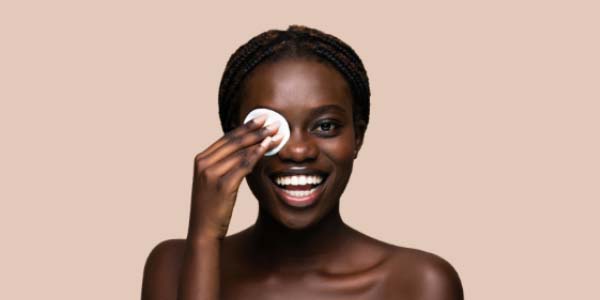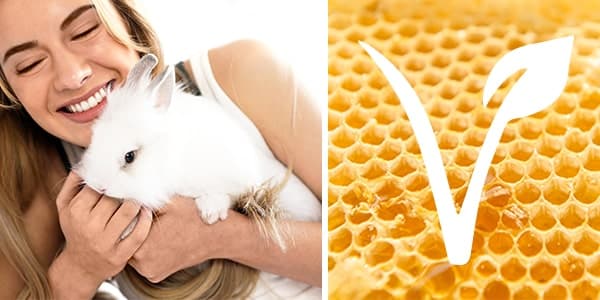LEARN THE SECRETS OF HOW TO LOOK AFTER YOUR NATURAL EYELASHES AND EYEBROWS
WHAT CAUSES DAMAGED EYELASHES?
Women everywhere dream of having long, beautiful, voluminous eyelashes, so it’s no surprise that eyelashes extensions are so popular. However, do you know that they can cause some serious damage to your natural eyelashes?
EYELASH EXTENSIONS
So, what are eyelash extensions?
Eyelash extensions are a cosmetic application used to enhance the length and curl of your eyelashes. They give the appearance of fuller, longer and thicker lashes without a mascara wand in sight. They are made from several different materials including mink, silk, synthetic, human or horsehair. The eyelash extensions are applied to your natural eyelashes by using a cyanoacrylate adhesive about 1-2mm from the base of the natural lash so the eyelash extensions never make contact with the eyelid. Eyelash extensions usually last up to 6 weeks if looked after properly. Keep them clean and tidy and they will last longer! But, if you don’t look after your eyelash extensions properly then they won’t last as long and they could potentially damage your natural eyelashes.
It’s important that if your eyelash extensions start to irritate your eyes you go back to the beautician who applied them to remove them. Beauticians are trained professionals and will know how to remove eyelash extensions safely and carefully without damaging your natural eyelashes.
Whatever you do, do not try and remove them yourself as you’ll end up breaking your natural eyelashes, or removing the eyelash completely! Honestly, it’s not worth the risk. It takes a long time for eyelash hairs to grow back and you don’t want to end up with patchy eyelashes, or worse, none at all!
You may notice over time that one or two eyelash extensions fall out, and this is normal. It’s a natural process as your eyelashes grow. We just don’t notice it as much as natural lashes are smaller and finer whereas eyelash extensions are thicker, longer and darker.
Your natural eyelash hair growth cycle occurs every six to eight weeks, so when new eyelashes grow, they push your old eyelashes out. Any eyelash extensions that are attached to your natural eyelash will fall out as well.
FALSE EYELASHES
If your budget doesn’t stretch to extensions you may have given falsies a go to achieve long beautiful voluminous lashes. These beauties are simple & easy to apply and are available to buy anywhere and everywhere.
False eyelashes can be applied yourself by adding some lash glue or adhesive and then sticking them onto your eyelid as close to your natural lash line as possible. And the results will look amazing. However false eyelashes can also cause temporary or permanent loss of your natural eyelashes if not removed properly so be careful! When removing your false eyelashes, it’s important to remove them slowly and gently, if you pull them off too fast or too hard your natural eyelashes will either break or be pulled out completely.
How, you might ask? Well, although the eyelash glue is mainly attached to your eyelid, sometimes the glue gets onto your natural eyelashes too. So, it is important when you want to remove your false eyelashes after a long day (or a night out) that you take your time and care, so you don’t end up ripping or breaking your natural eyelashes.
WHAT CAUSES DAMAGED EYEBROWS?
OVER PLUCKING
As eyebrow trends have changed over the years, it is safe to say that many brows have suffered at the mercy of the tweezer.
Overplucking your eyebrows can cause damage to your eyebrow hairs which can seem very hard to undo. Constant and continuous plucking can stunt hair growth completely, making it look and feel like your eyebrow hair will never grow back. Your eyebrow hair has a root that is attached to a bulb (think of a daffodil). Most of the time when you’re plucking your eyebrow hair you are removing it from the root, or if not removed correctly, snapping it under the surface of the skin, which gives the appearance that the hair has been removed.
Sometimes, on rare occasions, plucking your eyebrow hairs will remove the bulb of the hair altogether. If this happens then that hair will not grow back. However, if the hair is removed by the root, the bulb will notice this and start producing a new root, which will then grow a new strand of hair. Over the next few weeks, the hair will appear above the skin surface again, visible to the human eye.
MICROBLADING
Microblading is a semi-permanent makeup solution for perfect eyebrows, but it can be a technique that can leave disastrous results if not done properly by a licenced professional.
The Microblading procedure cuts the skin in order to deposit the pigment. Now, this is great, but the results don’t last forever. Every few months you will require a top-up to keep faded brows at bay, and you will have to continue Microblading for the rest of your life to sustain the look.
The more procedures you have, the more you are repeating the cutting of the skin, leaving you with permanent damage. It can also remove some brow hair that is already there and may even kill your existing hair follicles.
WAXING & THREADING
Waxing & threading are probably some of the most popular ways of removing unwanted brow hairs with long-lasting results, however over time when your individual hairs grow back, they grow back slower and finer which can be an issue if you want to change your brow style in the future.
SCIENCE BEHIND EYELASH AND BROW HAIR GROWTH.
When it comes to hair anatomy, we won’t lie and say there isn’t a lot to know. The truth is your hair is a lot more complicated than you might think.
Our eyelashes have an important job - to protect and maintain the health of the eyelid and help to stop any dust or dirt from getting in our eyes. Probably unsurprisingly, our eyelashes have similar characteristics to other hair on our body. A hair shaft extends outside of the skin, while the root and bulb are under the skin.
At the end of the hair follicle is a network of blood vessels that supply nutrients to feed the hair and help it grow, this is called the papilla. Surrounding the papilla is a bulb. A sebaceous gland surrounds the bulb, which secretes oil that helps to keep the hair conditioned.
SO HOW DO EYELASHES GROW?
Just like the hair on your scalp, eyelashes grow in a three-phase cycle.
Stage 1, the Anagen Phase, aka the growth phase:
This is when the hair is growing out of the new follicles and usually lasts between 30 and 45 days for eyelashes. Nearly half of your lashes are in this phase all the time.
Stage 2, the Catagen Phase, aka the degradation phase:
When the eyelash hair reaches this stage the growth of the follicles stops and begins to shrink. If an eyelash falls out or is plucked during this phase, it won’t grow back until the phase has run its course. Normally within 2-3 weeks.
Stage 3, the Telogen Phase, aka the resting phase:
This is when the hair follicle has been established, so when an eyelash falls out a new eyelash will grow in its place. Eyelashes generally stay put during this stage until they fall out. It normally takes 4-8 weeks before a new eyelash starts growing.
THE STRUCTURE OF THE EYELASH AND EYEBROW HAIR
The eyelash itself is made up of three structures that fit into one another, these are knowns as the innermost structure, the medulla and the cuticle. A thicker cortex surrounds the medulla to ensure its strength and stability. It also decides the colour of your hair, including your eyelashes and eyebrows. Then we have the final layer known as the cuticle. This is composed of several cell layers that form the outermost portion and offers protection to internal structures by its impermeability.
HOW TO LOOK AFTER YOUR EYELASHES AND BROWS.
Whatever tricks you use to make your lashes and brows stand out, there are a few steps you need to take to ensure they are the healthiest they can be.
It’s important to keep your natural eyelashes and eyebrows clean to maintain their health. Especially after wearing makeup. Make sure that you remove all of your eye makeup, including mascara, and remove any makeup from your eyebrows. If you don’t remove 100% of makeup unwanted bacteria can cause breakouts. Just like your skin, it is important that your eyelashes and eyebrow hairs can breathe.
A very simple way to keep your eyelashes and brows clean is to wash them daily with a good make-up remover. People with sensitive eyes, don’t worry there are eye makeup removers out there for you too, just look out for options made solely for eye care. When washing your eyelashes, it’s important not to rub too hard, as this can hurt your eyes and damage your lashes. Don’t tug on your lashes either as this will weaken them. You don’t want them falling out!
If you do have any beauty treatments be sure to do your research and find a reputable beautician. It’s always good to find out what they recommend to look after your eyelashes and eyebrows after treatment to prevent any long term damage.
NOURISHING YOUR EYELASHES AND EYEBROW HAIRS HELPS TO KEEP THEM HEALTHY, AND PREVENTS THEM FROM BECOMING DRY, BRITTLE AND DAMAGED.
Our lash & brow volumiser was created to put an end to damaged lashes, offering deep conditioning & hydration. It also thickens & lengthens lashes and brows naturally in just 2 weeks, Find out how here.



